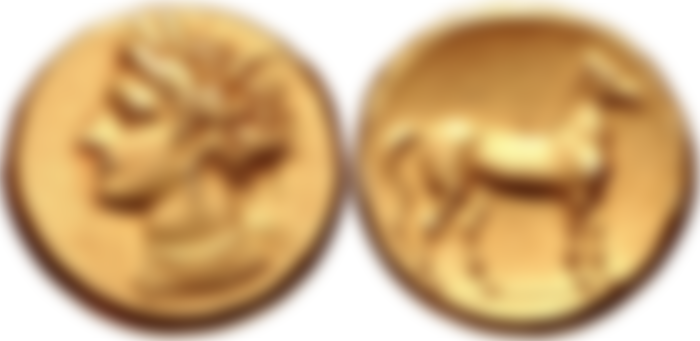The story of Carthage Coin
The Carthaginian coin was first minted in the 5th century BC. The Carthaginians, who initially adopted the dirham, later minted silver shekel coins. The Carthaginians, who initially adopted the drachma, later minted silver shekel coins. The designs were instantly recognizable as intended and featured famous figures such as Hannibal or local flora and fauna such as palm trees and elephants.
Barter to Coin
Carthage, like its Phoenician founders and many other ancient Mediterranean trading cultures, entered the coin world relatively late. Greece and its colonies had used them for several centuries. Barter and barter were the tried-and-tested forms of payment in the ancient world before coinage, and this system was useful for countries like Carthage, which traded in remote places where minted coins were less useful and where their value was not always recognized.
Ultimately, however, the convenience of carrying certain weights of ingots made of precious and semi-precious metals convinced the Carthaginians to adopt this method, and from there it was a small step toward printing more manageable forms of payment in the form of coins. .
The first Carthaginian coins were actually minted not in Carthage's hometown, but in Sicily in the late 5th century BC, not by coincidence, a place that has long produced its own coins. The beginning of a Carthaginian-controlled mint was due to the necessity to pay mercenaries, as had previously happened in wider Greece.
Soldiers in the field did not have much use for heavy metal ingots and could not comfortably carry large quantities of goods such as grain or other foodstuffs. Carthage's military campaigns in western Sicily in 409 and 405 BC and the arrival of coins were not unrelated at the time.
Dirham and Shekel
The first Carthaginian coins were made of either silver or bronze and replicated the Greek tetradirham (four dirham) coin and unit famously produced by Athens. They were printed in the typical fashion of the time by hammering a flat metal disc between two engraved paints. A Carthaginian silver tetradirham coin weighed about 17 grams.
From the 4th century BC, new coins of higher value were added to the assortment of electrum (an alloy of gold and silver) and pure gold equal to 20 dirhams. Carthaginian mint coins were also seen at home in the 4th century BC, and at the end of that century, the dirham was changed to a new unit, the shekel (c. 11 g), a heavy silver coin. There were fractions of a shekel coin for smaller purchases, and two, three, or even six (about 44 g) coins for larger expenditures.
When Carthage conquered southern Spain in the 3rd century BC and took control of the rich silver mines there, local mints were set up to cash this new prize immediately. Sardinia was an important mint, especially during the First Punic War (264-241 BC), when Sicily was under threat. As things began to turn bad for Carthage against Roman power, silver coins began to contain less and less silver.
Coin Designs
In the ancient world, coins were an important tool for conveying political and cultural messages by presenting the heads of rulers and figures from local mythology. Carthage was no different, and its coins depicted key figures such as Dido (aka Elissa, the legendary founder of Carthage, and distinguished by her long-necked and soft Phrygian hat with ear flaps), the god Melqart (typically wearing and/or wearing a lionskin headdress). . carrying a stick), the goddesses Tanit, Astarte, and more rarely Isis, and the great generals Hamilcar Barca and Hannibal. Other popular and immediately recognizable designs were the bow of a ship, palm tree, horse (head only or whole), lion, and war elephant.

Carthaginian coins sometimes included legends as well as pictures containing the city of export, such as Sys (Panormus) and Carthage, or words indicating immediate destinations: mhnt (army), 'm mhnt (army people), mhsbm (payers), and b'rst ( 'regions', eg Sicily and Spain).
Carthaginian coins were, at the time, an eclectic mix of Greek designs and Carthage's own artistic tradition, leading historian Dexter Hoyos to conclude that "the Carthaginians' ability to adopt, adapt, and develop what they wanted from other cultural worlds was no less evident in their coins."
That the coins were successful and helped increase Carthage's commercial prosperity has been proven by archaeologists finding them not only in Spain, Sicily, and mainland Italy, but also in remote places such as the Balkans and Azores.

This is history in its fullest. I just learnt something about Carthage coin